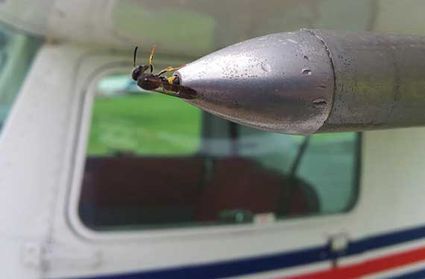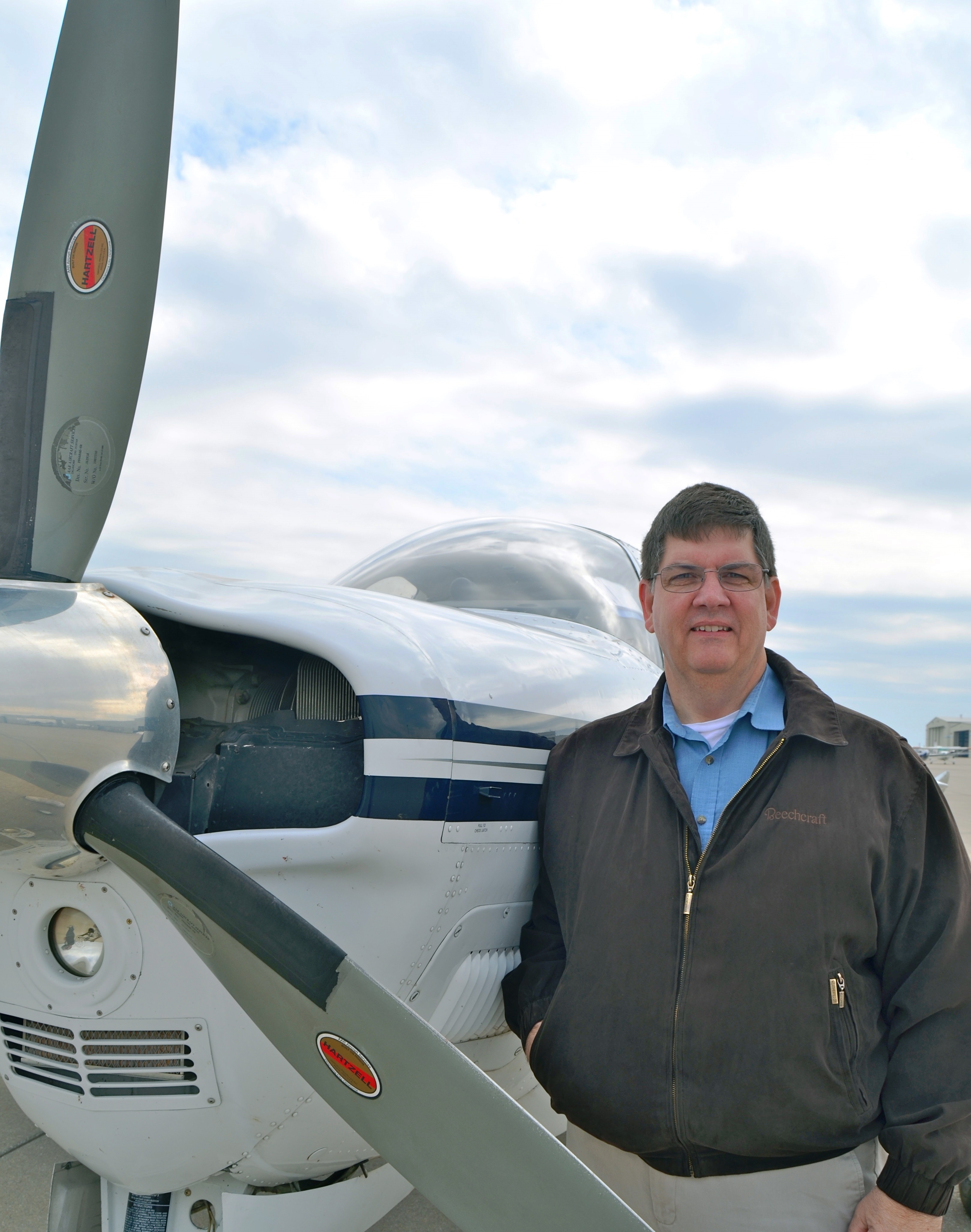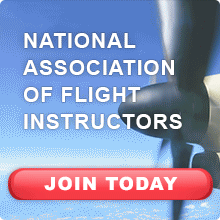| NAFI NOTAMs #35 |
Improbability and the Beginning of Instructional Wisdom~Guest Blogger Thomas P. Turner
The learner (to use the modern term) was doing a great job and I was pretty certain he’d solo in the next hour or so. So after a little air work we were now on left downwind for Runway 18. No one else was in the pattern and Unicom was quiet. Somewhere about midfield my student pulled back a little on the yoke, then began easing the nose down—probably involuntary movements in response to an unusual situation, first a tensing up and then an attempt to correct for what he saw. For the airspeed indicator was reading low, and although we continued more or less level on downwind the needle spun slowly past the bottom of the green arc, then the bottom of the white arc, and then almost vertically as if the airplane was sitting on the ramp. My student said something in the neighborhood of, “Well, darn,” and looked directly at me, calling on all the judgment and experience I’d amassed in my lofty 300 hours’ total time. “What do we do?” his wide eyes exclaimed. I’d never had that happen before, but I expected it was somewhat related to the large bug smears that erupted on the Cessna’s windscreen about that same time. What I did know was that the laws of aerodynamics did not change just because one of our instruments was no longer working. “Let’s just turn to the right out of the pattern for a minute,” I instructed. I think I thought it was better to give him something to do that showed zero airspeed, in this context, did not mean we were going to crash. I had the protopilot make a few level turns that built up his confidence, then maneuver onto a 45 to re-enter the downwind. This time we focused on power—put the RPM where you always do on downwind, pull carb heat and reduce throttle the same amount as always when abeam the touchdown spot. Flaps one notch at a time, with the usual roll of the trim wheel as each notch of flaps came out. Stay coordinated in the turns, and look out the front for the proper sight picture on base, the turn to final and on final approach. Crossing the threshold do what you always do: look toward the far end of the runway. At that point you don’t look at the airspeed indicator anyway. My student made one of his best landings ever. We taxied in and shut down on the ramp. We found exactly what I expected—a large June bug smashed into the front of the pitot tube. It was big enough I could pull it out without having to wait for the mechanic to blow out the line the next morning, so we climbed in to make a few more circuits. Before the second time around I covered the airspeed indicator with one of those ‘80s-vintage rubber soap dishes. “See if you can take off, fly the entire pattern and land without the airspeed indicator.” He did just fine. In fact, the rest of the flight went so well, just as the sun slipped below the horizon he logged his first three solo takeoffs and landings. I also challenged him to intentional catch a June bug in his pitot tube on downwind. I don’t recall that he ever did.
(Photo Credit: FAA) It occurred to me, so early in my teaching career, that any of my students could have lost an airspeed indicator or had some other emergency, alone on their very first solo flight. It was my job not only to ensure they could fly when everything was right but also that they had some experience to help if something went wrong. My students starting logging a couple more hours before solo after that. I’d throw in some simulated engine failures in the pattern, a couple of no-flap landings, and an electrical failure so they’d be ready, just in case—none of that was usually taught before first solo in those days when there was no presolo written test or other regulatory guidance on what was required before solo other than endorsements. Since that day I’ve required a full trip around the pattern with the airspeed indicator covered before every first solo, and even with experienced pilots when I provide initial transition into a high performance airplane. It’s improbable that any of these things might happen to a learner in my charge at any point in their training. But it’s not impossible. I credit that June bug with setting me on a path toward wisdom as a flight instructor. Thomas P. Turner has been instructing since 1988 and specializes in transition and recurrent training. In 2015 Tom was inducted into the Flight Instructor Hall of Fame, but he continues to learn something every time he flies. Subscribe to Tom’s free FLYING LESSONS Weekly blog at www.mastery-flight-training.com.
Blogs are intended for educational purposes only and do not replace independent, professional judgment. Statements of fact and opinions expressed are those of the author individually and, unless expressly stated to the contrary, are not the opinions or position of the National Association of Flight Instructors. NAFI does not endorse or approve, and assumes no responsibility for, the content, accuracy or completeness of the information presented. Readers should note content may appear in various media, including print, email, enews without further notice. |

 Like a lot of pilots of my generation, my flying career started in the right seat of a Cessna 152 at a quiet, rural airport. I was the instructor in a one-person flying service in central Missouri. One early summer evening, as the wind calmed down, the shadows grew and the skies turned golden with the setting sun, I was in my happy place with a pre-solo student in the Cessna’s left seat. Of the flying school’s two 152s we had drawn the red-striped N46123 – “flying is easy as 1-2-3,” I quipped in the sales pitch on demo flights. The registration N46123 is now painted on a Boeing 737-800, but back then the designation belonged to the beginning of pilots’ dreams, not their career destination.
Like a lot of pilots of my generation, my flying career started in the right seat of a Cessna 152 at a quiet, rural airport. I was the instructor in a one-person flying service in central Missouri. One early summer evening, as the wind calmed down, the shadows grew and the skies turned golden with the setting sun, I was in my happy place with a pre-solo student in the Cessna’s left seat. Of the flying school’s two 152s we had drawn the red-striped N46123 – “flying is easy as 1-2-3,” I quipped in the sales pitch on demo flights. The registration N46123 is now painted on a Boeing 737-800, but back then the designation belonged to the beginning of pilots’ dreams, not their career destination.
 Thomas P. Turner
Thomas P. Turner





